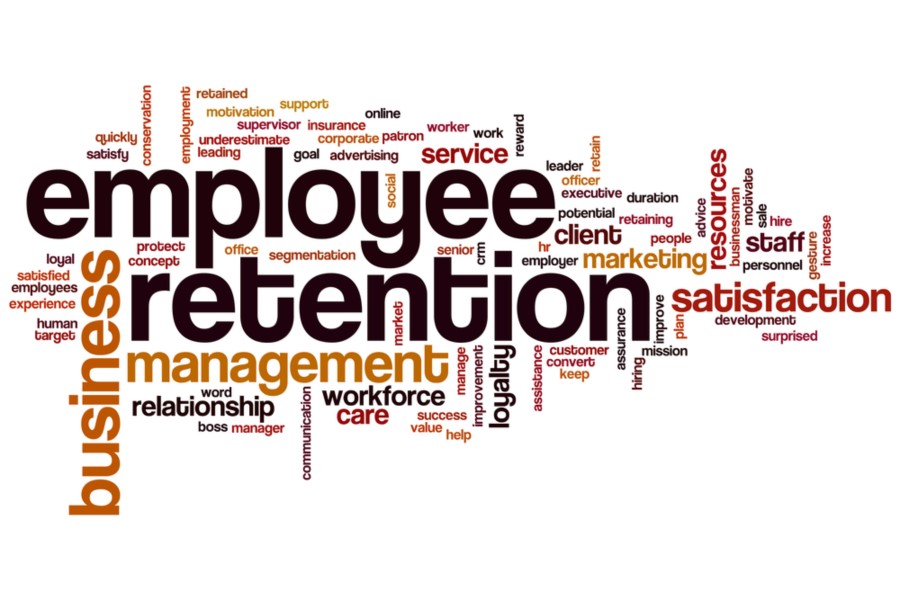The loyalty factor: five ways to drive employee retention

This vast increase in employee turnover has forced employers to pour more time and money into providing an amazing employee experience. Businesses are aiming to focus on driving maximum engagement and productivity while maintaining a unique culture.
But how do you achieve this? Check out our five top tips to increase employee loyalty, and drive retention.
1. Look beyond a flashy workspace
Employers often initially focus on the physical office space, adding extras such as ping-pong tables or vending machines to portray a fun environment. However, favouring style over substance will not always connect back to your company’s values, meaning it is unlikely to have an effect on employee loyalty or help drive performance. Yes, creating an enjoyable and inviting office space is a good start to keep employees happy, but it can’t be done in isolation. Employers need to invest in every aspect of the employee journey to secure the all-important engagement that leads to retention.
2. Take a holistic approach to wellness
Stress is often a major factor affecting employees’ mental and physical health. Our Global Employee Benefits Watch 2018/19 whitepaper revealed that employers are falling short when it comes to supporting their employees’ wellbeing.
There is a real chance here to get ahead of the market by offering benefits that best support the needs of your people. Employers need to take into account the wide range of needs a workforce has in order to be able to care effectively for their financial, physical and mental wellness. In fact, our UK Employee Benefits Watch 2018 Report found that, employers that offer a holistic benefits programme, with personalised support at life events, are 35 per cent more likely to be offering benefits their employees actually want.
3. Be flexible
Organisations need to be able to cater to a wide range of employee wants and needs, and this is best achieved by offering flexible benefits. For example, a business may want to encourage their employees to stay fit and healthy, so offer a discounted gym-membership. This is a promising start, but may not appeal to all employees. Instead, they could include benefits such as complimentary exercise classes, mindfulness apps or nutritional advice as a component of their benefits programmes.
Another way to encourage wellness is by incorporating it into the workplace, ranging from offering free fruit to investing in standing desks. By being flexible and broadening the offering towards holistic wellbeing, organisations will actively improve their employees’ overall wellness.
4. Provide an consumer-grade digital experience
Offering great benefits is only step one. If organisations fail to communicate the great benefits on offer to their people, then they are unlikely to engage with the initiative. This in turn will prevent any increase in employee wellbeing and therefore, high turnover remains.
Our research found that employers who use technology to provide a seamless, digital experience for employees are four times more likely to be effective at attracting and retaining talent. Progressive employers may do this by using technology-enabled features such as ‘wellness pots’ available through benefits tech. These provide an employee with an allowance to spend on their own personal health or wellness goals, such as new running shoes or a piano lesson.
Using a centralised online benefits platform will also help HR teams, as it allows insights into employees’ engagement with their benefits. This data can be used to see what’s working, what needs improving, and which benefits provide the most ROI.
5. Keep measuring
Our global research demonstrates that analysing data to measure all areas of a benefits programme shines a light on which benefits are really meeting the needs of your people. This allows you to prove how effective your initiatives are, adjust your strategy as necessary and demonstrate ROI on your benefits spend. This also means less time spent on benefits that have little impact on your employees, helping to reduce the administration burden for HR teams, giving them more bandwidth to spend on activities that optimise the employee experience. Organisations that do this are 95 per cent more likely to be offering benefits that help retain top talent.
Employers are going to have to continue the fight for retention. To be successful, organisations need to stay current and keep up with the wants and needs of the modern workforce, especially as 83 per cent of employees who said their benefits have had a positive impact on their life said they felt loyal towards their employer.
As a result, it is therefore imperative that you develop your employee engagement and retention strategies now. Doing this will firmly establish your organisation as an ideal place to work, solidifying your employees’ loyalty, driving retention, and allowing you to win the war for top talent.
Author is David Dodd, Consulting Director at Thomsons Online Benefits.
This article was provided by Thomsons Online Benefits.






